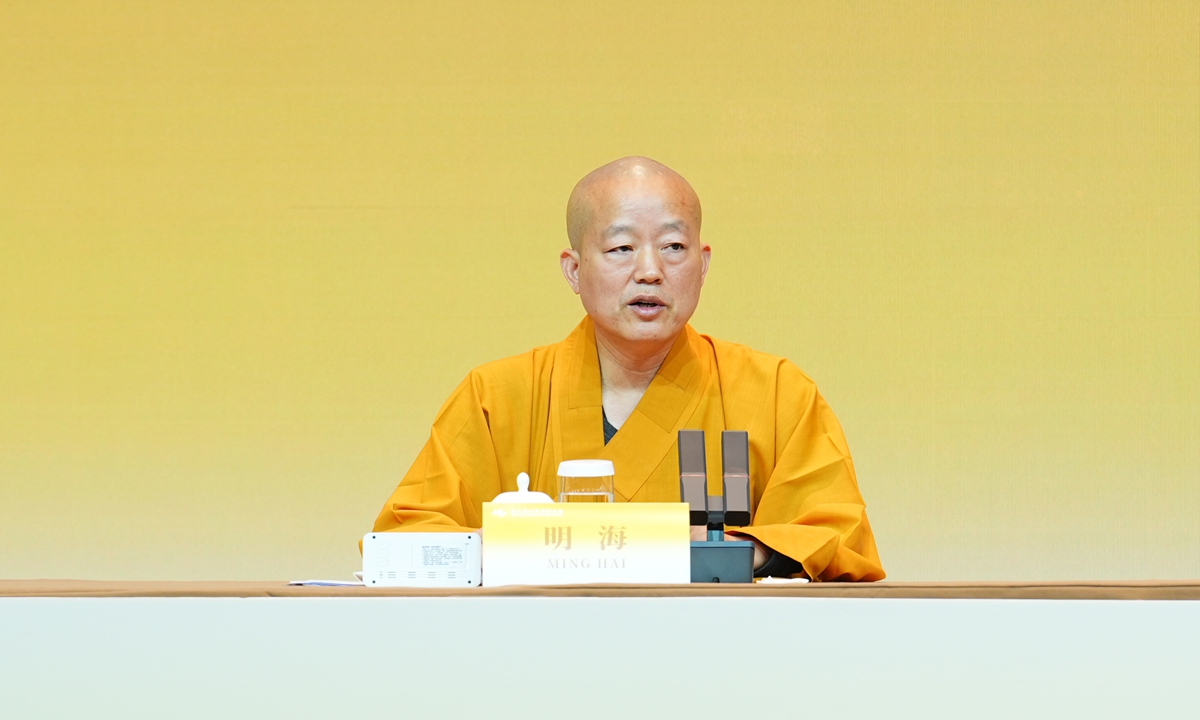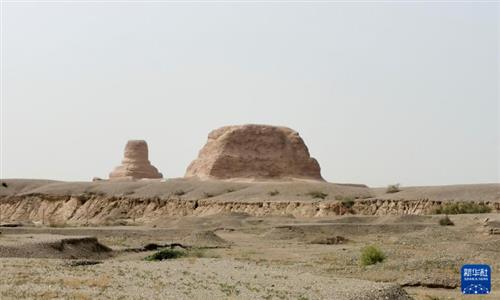ARTS / CULTURE & LEISURE
SWBF recognizes modern influence of Buddhism on global community
Harmony & integration

The Xuedou Temple in Ningbo, Zhejiang Province Photo: VCG
The theme of the Sixth World Buddhist Forum (SWBF), "Hand in Hand for Coexistence," represents a grand vision. As discussions unfold regarding Buddhism's role in promoting global peace and mental well-being, the theme's significance becomes clearer: the 2,500-year-old Buddhism is still relevant to contemporary global community.On Tuesday, the three-day SWBF started in Ningbo, East China's Zhejiang Province. Representatives from 72 countries and regions attended the event, which Venerable Master Minghai, vice president of the Buddhist Association of China, defines as a "global multilateral dialogue mechanism." He also shared with the Global Times that over the years, the sinicization of Buddhism has inspired people in countries and regions like Japan and across the Taiwan Straits.
Philosophy meets reality
Not far from the forum's 2024 venue in Ningbo, in 2006, the First World Buddhist Forum was also held in Hangzhou and Zhoushan, Zhejiang Province. Indeed, the province boasts a rich Buddhist heritage, including Putuo Mountain and Xuedou Mountain, locations closely associated with the Buddhist figures of Guanyin and the Maitreya Buddha respectively.
Located at the Xuedou Mountain in Ningbo, the event is attended by more than 2,000 participants from all over the world including those from European countries like France, Italy and Germany.
The SWBF stands out due to captivating seminar topics including one that features the digitalization of Buddhist classics as its theme. The seminar touches on the preservation and collation of Buddhist texts in China. Taking The Chinese Buddhist Canon, the encyclopaedia of Chinese Buddhism, also known as Zhonghua Dazangjing as an example, its main edition alone collected more than 1,900 scriptures, totaling over 100 million characters.
In light of this vast body of work, modern technology has introduced digitalization as a way of promoting "smart" Buddhism in contemporary China.
In 2018, portions of the The Chinese Buddhist Canon written in Tibetan language were digitalized and published. Advancement in tools like Artificial Intelligence (AI) has enabled the creation of online platforms that offer access to Buddhist classics developed by research institutions like the Research Center for Digital Humanities of Peking University.
The SWBF aims not only to focus on Buddhist teachings, but also to address "pressing global issues," said Bao Xiuying, chief of the Ethnic and Religious Affairs Committee of Zhejiang Province, at the event's press conference on Monday.
The Chinese Buddhist concept of Yuanrong, roughly translated as "harmony and integration," is a means to answer global issues of concern.
"In the process of sinicization of Buddhism, the notion of Yuanrong means to respect and embrace diversity without judgement," Venerable Master Minghai explained.
He also adds that the core tenet of Chinese Buddhism emphasizes "integration" and does not believe there is "absolute independence," and this has become a shared mind-set in diplomatic relations, fostering closer ties between Buddhist communities on a global scale.

Venerable Master Minghai speaks during a press conference on October 14 in Ningbo, Zhejiang Province. Photo: Courtesy of organizers of the Sixth World Buddhist Forum
'A golden bond'The Second World Buddhist Forum in 2009 marked the first large-scale international religious gathering jointly hosted by Buddhist communities from the Chinese mainland and the island of Taiwan. It attracted 1,700 Buddhist professionals and left a lasting impression on Venerable Master Minghai.
"I still remember the cooperation we achieved at that event," he said. At its closing ceremony in Taipei, a "declaration" was issued, highlighting the achievement of harmony through unity as a common goal for cross-Straits Buddhist communities.
"The developments in Buddhism in the Chinese mainland and the Taiwan island share a common origin," Venerable Master Minghai told the Global Times.
This common goal in Buddhism is deeply rooted in Chinese history. Dating back to the Ming Dynasty (1368-1644), the Chinese mainland's Buddhist tradition started to spread to the island of Taiwan.
In modern times, pioneering figures like the Grand Master Wei Chueh and the late Master Hsing Yun, founder of the Fo Guang Shan Buddhist order in Taiwan island, have deepened the cross-Straits exchanges, while also facilitating the "modernization and transformation of Buddhism in the island of Taiwan," Venerable Master Minghai noted.
"Buddhism is an organic part of Chinese culture, it sheds light on modern practices such as 'one country, two systems,'" he said.
Nowadays, the principles established by previous forums continue to yield tangible results, as evidenced by initiatives such as cross-Straits tours and the construction project of Buddhist temples in Nantong, Jiangsu Province.
During the First World Buddhist Forum, participants from a total of 37 countries and regions joined the event. Thanks to Asian community's shared Buddhist tradition, Bao said that the doctrine has become a "golden bond" that bridges China, Japan and South Korea.
"Through cultural exchanges, the sinicization of Buddhism is also attracting people in Western countries such as Germany, Australia and the US," Li Yao, a Buddhist scholar, told the Global Times.



